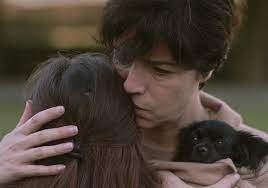254 total views, 1 views today
Bad Living 2023 Movie Review
A film is almost always a complete work. The characters exist for the 90 or 120 minutes that the film lasts, then their story is told. Filmmakers rarely attempt to break open this hermetic form. In recent years, it has occasionally happened that a prequel to the actual film has been submitted with the help of short films or comics, or that a bridge has been built between an original and a sequel.
But what the Portuguese director João Canijo does in his film ” Bad Living ” is something very special: the drama about a family of hoteliers and at least complicated, probably even toxic mother-daughter relationships works excellently on its own . But Canjiro still made a parallel film called “ Living Bad ”, which takes place at the same time in the same hotel but focuses on the guests instead of the staff and the owners. A remarkable formal experiment.
A lonely hotel, somewhere near the Portuguese coast. The house is no longer doing well, only a few guests are visiting. The women who own the hotel are worried. The manager is Piedade ( Anabela Moreira ), who, like her mother Sara ( Rita Blanco ), also lives in the hotel. Now Piedade’s daughter Salomé ( Madalena Almeida ) has also arrived, whose father, from whom Piedade had been separated for a long time, has just died. The relationship between the women from three generations is distant and cool, unspoken injuries and reproaches are in the room. Likewise, the feeling of not having received enough attention, of not having been loved.
From the first moment, “Mal Viver” impresses with its formal rigor: in long shots, João Canijo shows what is happening, which only sometimes takes place directly in front of the camera, but more often in the depth of the picture, which is framed by door frames or windows. In this way the geography of the hotel is hinted at, while the figures are separated at the same moment by the camera. In addition to the succinct images, the sound is particularly noteworthy: conversation and scraps of words repeatedly overlap, so that it is not always entirely clear which of the characters is being heard, for example in a long shot of the pool area. This applies in particular to another striking shot that connects “Bad Living” and its parallel film “Living Bad”. The dark facade of the hotel can be seen here, some rooms are brighter lit,
This shot is somewhat reminiscent of the backyard in Alfred Hitchcock’s “Courtyard Window,” where James Stewart, confined to a wheelchair, watches little dramas unfold in his neighbors’ windows. And something similar happens here: This shot is repeated three times in “Living Bad”, in each of the three episodes that make up the film.
In each of them, characters play the leading roles who were still in the background in “Bad Living”, who were waited on in the restaurant or who checked in at the reception. There are three couples, one whose husband is constantly on the phone with his mother, one in which the mother even went on vacation with her daughter and her husband, and finally a young lesbian couple who were driven apart by the mother of one woman becomes.
Some scenes from “Bad Living” can be seen in “Living Bad” from a different, slightly different perspective, here Piedade or Salomé are suddenly no longer the protagonists, but secondary characters. One could easily dismiss this formal experiment as a gimmick, in fact it is not necessary to see one film to understand the other. Instead, one should understand “Living Bad” as a thematic continuation in which the topic of mother-daughter relationships is deepened and expanded. Not that “Bad Living” doesn’t make it clear enough how toxic these relationships can be, how injuries can be passed down through the generations and take hold in people.
João Canijo also alludes to the fate of Portugal here, to the dictatorship phase that ended in the mid-1970s. That was 50 years ago, so a good two generations, but as you can see in Germany and in dealing with unity, injuries often run deep and are usually internalized by representatives of the generations that were born much later became. Above all, this complexity of content, the complexity of the characters, the formal rigor of the staging make up the quality of “Bad Living”. The parallel film “Living Bad” is just a kind of addition, a supplement, a formal experiment that deepens the subject matter of the two films, albeit in a formally very interesting and unusual way.
The Portuguese director João Canijo has made a formally strict, very dense film about toxic mother-daughter relationships with “Bad Living”. Anyone who has the opportunity should also take a look at the parallel film “Living Bad”, which varies characters and themes and also expands the already impressive drama into an exciting formal experiment.
